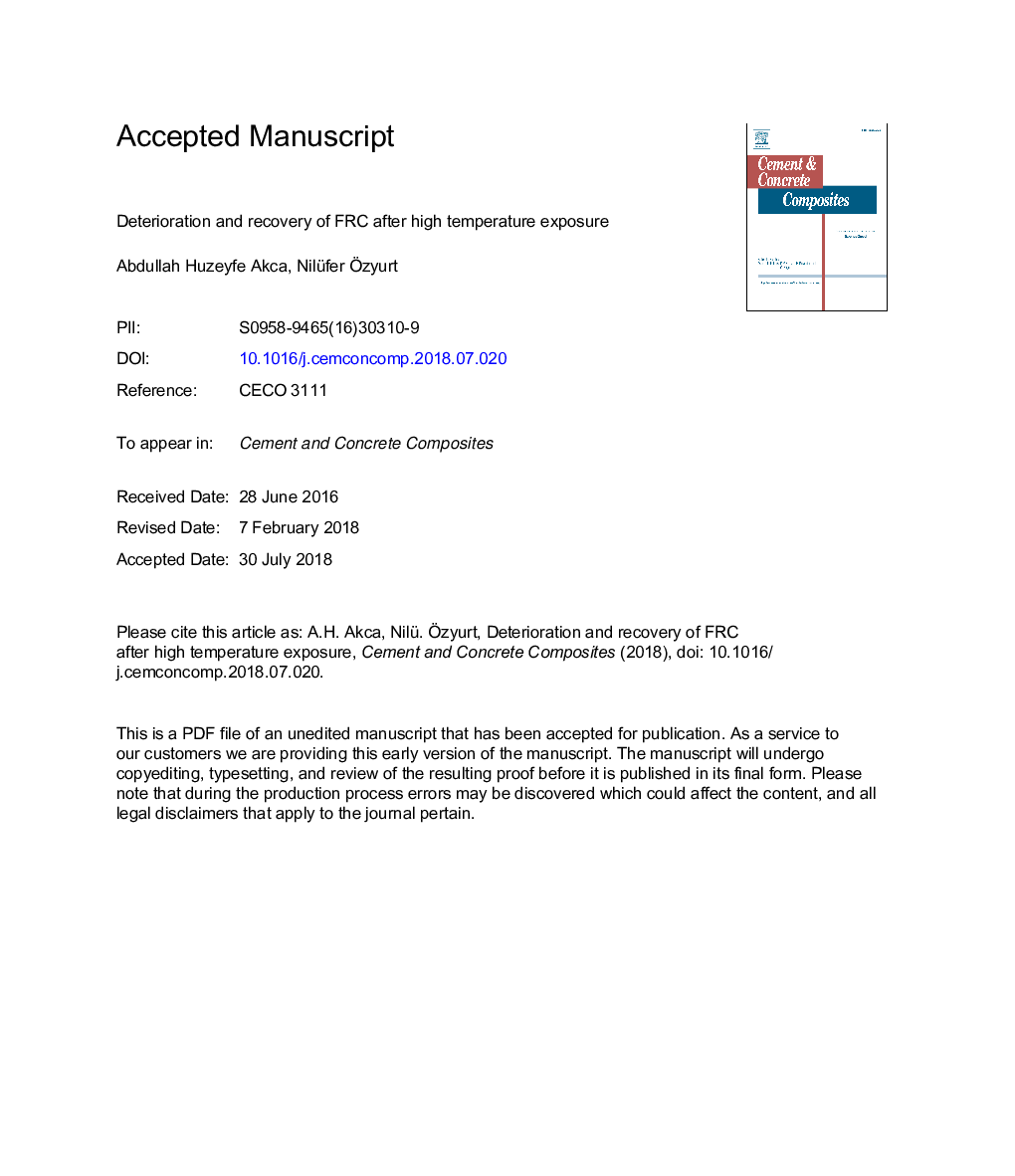| Article ID | Journal | Published Year | Pages | File Type |
|---|---|---|---|---|
| 7883462 | Cement and Concrete Composites | 2018 | 24 Pages |
Abstract
In general, physical properties of concrete deteriorate after high temperature exposure and this is a result of some morphological changes occur in microstructure of concrete. After heating some new phases occur in concrete and these have a tendency to react with water and carbon dioxide at the post heating stage. The most common one is expansive rehydration of CaO by turning into Ca(OH)2 and this reaction should be avoided for concrete of which mechanical properties deteriorated after heating. Since, Ca(OH)2 is a soluble product in water, water re-curing after high temperature exposure can be beneficial. Also using steel fibers in concrete may be useful to restrain the stresses occurred due to this expansion and polypropylene fibers can be used to reduce the pore pressure in concrete during heating. Therefore, 8 groups of 0.45 w/c ratio of concrete were produced by using different fibers and air entraining admixture. Cubic concrete specimens (15â¯cm on a side) were cast and only one face of the specimens was subjected to 1000â¯Â°C. K-Type thermocouples were placed in concrete specimens to monitor temperature change during heating. Two re-curing methods, air and water, were applied to specimens following the cooling period. SEM, EDX, XRD and TGA investigations were conducted to evaluate the morphological changes in concrete. Then effects of these changes on the residual mechanical properties of concretes were evaluated.
Keywords
Related Topics
Physical Sciences and Engineering
Engineering
Industrial and Manufacturing Engineering
Authors
Abdullah Huzeyfe Akca, Nilüfer Ãzyurt,
